Astrophysics is a relatively young field of study, but it is responsible for delving into fascinating information about the planets in our solar system, including their structure and composition. Distinguished from astronomy, astrophysics focuses on the physical makeup of celestial bodies.
The sky has always captivated and piqued the interest of humanity. Even in the ancient times of mythical Atlantis, people observed the stars. The structure of celestial bodies, their paths through the sky, and the changing seasons on Earth were all attributed to the influence of the stars. Over time, theories were confirmed or discarded. Eventually, it was revealed that Earth is not the only planet in our galaxy….
A compilation of celestial objects
Proceeding to delineate the captivating characteristics of each, it is imperative to compile a comprehensive inventory of the vast assortment of planets within the solar system. The subsequent table, illustrating their respective distances from the sun, will be situated slightly below. In this section, we shall confine ourselves to an alphabetical enumeration:
- Venus,
- Earth,
- Mars,
- Mercury,
- Neptune,
- Saturn,
- Jupiter,
- Uranus.
Attention! Notably, the initial three entities have been postulated by science fiction authors as potential havens for human colonization. Although this prospect is met with skepticism by scientists, the realm of imagination holds sway over all possibilities.
Interesting Trivia
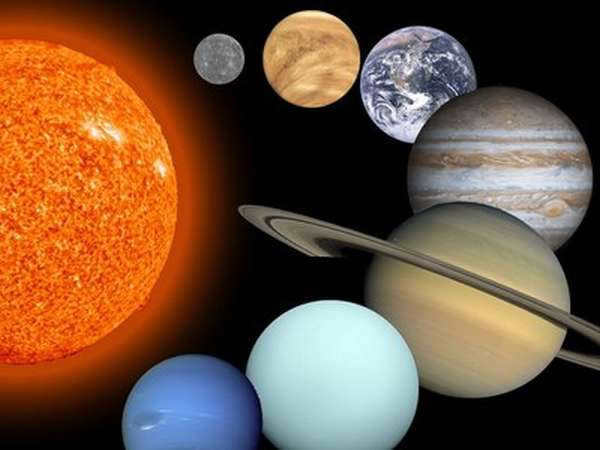
The film Carnival Night was seen by everyone, so there is no need to recap the storyline. However, even in the New Year’s celebration plan discussed in the movie, there should be a presentation on the topic: “Does life exist on Mars?”
The fate of the lecturer and the presentation itself is well known to the audience. Mars is often featured in news updates as well.
Astronomical knowledge includes the fact that Mars orbits on the fourth trajectory from the Sun, making it a member of the Earth’s group. etc.
Mars
It is fascinating how all the closest planets are named after ancient Roman gods. According to ancient mythology, Mars is the god of war. Interestingly, there is some confusion, as many also consider him to be the god of fertility. Both interpretations are correct. The Romans regarded him as the god of fertility, who had the power to both destroy and preserve crops. Then, in Greek mythology, he was given the name Ares (Mars) – the god of war.
Attention! The Red Planet – Mars earned its unofficial name due to its high iron content on the surface, which gives it a reddish appearance. In Greek mythology, the god was given a formidable name for the same reason. The reddish hue resembled the color of blood.
Not many people are aware that the initial month of spring is actually named after the deity of fertility. This fact remains consistent across numerous languages. March is synonymous with Mars. March is synonymous with Mars.
Mars is widely regarded as one of the most captivating celestial bodies within our solar system, particularly for children:
- The highest peak on Earth, Mount Everest, is a mere third of the height of Mars’ highest point. Mount Everest stands at over 8 kilometers in height, whereas Mount Olympus on Mars measures 27 kilometers.
- Thanks to the weaker gravitational pull on Mars, you can jump three times higher.
- Similar to Earth, Mars experiences four distinct seasons, each lasting six months, resulting in a year that spans 687 Earth days (equivalent to 2 Earth years, which is calculated as 365 multiplied by 2, totaling 730).
- Mars possesses its own version of the infamous “Bermuda Triangle.” Out of every three satellites sent to Mars, only one returns, with the other two mysteriously disappearing.
Venus
The average user might initially assume that the hottest planet in our solar system is Mercury, being the closest to the sun. However, our Earth’s twin, Venus, actually takes the lead in terms of temperature. While Mercury lacks an atmosphere and is heated by the sun, it takes 44 days for it to heat up and the same amount of time to cool down. A year on Mercury lasts 88 days. On the other hand, Venus, with its carbon dioxide-rich atmosphere, maintains a consistently high temperature.
Attention! Situated between Mercury and Earth, Venus experiences almost constant extreme heat due to its greenhouse effect. The temperature averages around 462 degrees. To put this into perspective, lead melts at 327 degrees.
- Despite not having any satellites, Venus is still bright enough to cast a shadow.
- A day on Venus lasts longer than a year – 243 Earth days. (A year on Venus is 225 Earth days.)
- 3. All the planets in the Solar System rotate in a counterclockwise direction, except Venus, which rotates in the opposite direction.
- Wind speeds on Venus can reach up to 360 kilometers per hour.
Mercury
Mercury is the closest planet to the sun. Here are some fascinating facts about it:
- Despite its dangerously close proximity to its scorching neighbor, Mercury has icy formations.
- Mercury is home to geysers. Due to the absence of oxygen on the planet, these geysers are composed of pure hydrogen.
- American research satellites have confirmed the existence of a small magnetic field on Mercury.
- Mercury’s orbit is eccentric. It follows an elliptical path, with its maximum diameter being nearly twice as long as its minimum diameter.
- Mercury has a wrinkled surface due to its thin atmosphere, causing the inner core to cool and shrink. This results in the mantle being covered with wrinkles that can reach hundreds of meters in height.
Saturn
Saturn, despite its minimal light and heat, does not have glaciers because its main components are gases such as helium and hydrogen. It is one of the ringed planets in the Solar System. When Galileo first observed Saturn, he mistakenly believed that the rings were two satellites in motion, but it was later discovered that they rotate rapidly.
- With a total of 62 satellites, Saturn boasts the second largest number of satellites in the solar system. These satellites range in size, from giants larger than Mercury to very small ones with a diameter of up to 5 km.
- The rings of Saturn serve as its main adornment.
- Measuring a whopping 760 times larger than Earth, Saturn is truly a giant among planets.
- In terms of density, Saturn’s density is only surpassed by that of water.
Researchers have offered an intriguing explanation for the last two facts when explaining them to children:
- If you were to create a bag the size of Saturn, it would be able to hold exactly 760 balls with a diameter equal to that of the Earth.
- Imagine if there was a gigantic bathtub that matched Saturn’s size and it was filled with water – Saturn would actually float on the surface!
Pluto
Rewrite the text, making it unique, using the English language and preserving the HTML markup:
Pluto
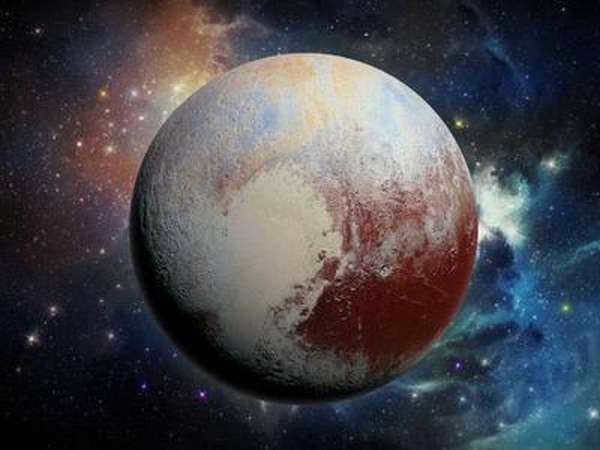
Pluto is a particularly intriguing celestial body.
Before the 21st century, it was believed to be the most distant planet from the Sun. However, the discovery of the second asteroid belt beyond Neptune, where fragments larger and heavier than Pluto were found, led to its reclassification as a dwarf planet.
An official name for objects of this size has yet to be coined. Interestingly, this “fragment” has five moons. One of them, Charon, is almost the same size as Pluto itself.
In our system, only Earth and Pluto have a blue sky. Interestingly, Pluto is known for its abundance of ice, unlike Mercury where the ice is not frozen water due to its proximity to the sun.
Jupiter
However, the most fascinating planet is Jupiter:
- It possesses rings. These rings consist of five fragments of meteorites that have come into close proximity to the planet. Unlike Saturn’s rings, they do not contain any ice.
- Jupiter’s moons are named after the mistresses of the ancient Greek god it is named after.
- It poses the most danger to radio and magnetic devices. Its magnetic field has the potential to disrupt the instruments of a spacecraft attempting to approach it.
- The weight of all the other planets orbiting the Sun is significantly less than the mass of Jupiter.
Earth
- The south pole, Antarctica, holds nearly 90% of the world’s ice and approximately 70% of its fresh water supply.
- The longest mountain range exists underwater, spanning over 600,000 kilometers.
- The Himalayas hold the record for the longest range on land, extending over 2500 km.
- The Dead Sea is the second deepest point on Earth, with a depth of 400 meters below sea level.
- According to scientists, our planet used to have two moons. However, one of them collided with Earth, resulting in its fragmentation and transformation into an asteroid belt.
- In the past, the Earth was not depicted as green-blue in space images like it is today, but rather as a vibrant purple due to the abundance of bacteria.
These are just a few of the fascinating facts about our planet. Scientists have many more intriguing and sometimes amusing pieces of information to share.
The Force of Gravity
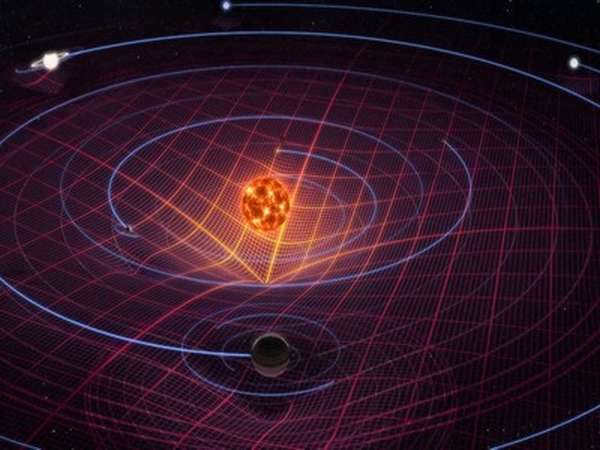
The concept of attraction can be simplified to gravity.
When people walk on a flat surface, it is because of the pull of gravity. If a stone is thrown, it will eventually fall due to the force of gravity. If you ride a bicycle unsteadily, you will fall again due to gravity.
The solar system and gravity are closely connected. The celestial bodies orbit around a star.
Without gravity, there would be no orbits. All the planets revolving around our star would drift off in different directions.
Gravity is also responsible for the spherical shape of all planets. Gravity is influenced by distance: particles of matter are attracted to each other, forming a spherical object.
It is evident from the table that as an object gets farther from the main star, the duration of the day decreases and the length of the year increases. Which planet has the shortest year? Mercury has a remarkably short year of only 3 Earth months. This figure, however, has not been confirmed or refuted by scientists yet, as continuous observation of Mercury is not possible with Earth telescopes. The proximity to the main star would disrupt the optics. The data on Mercury’s year is collected through space exploration vehicles.
The length of a planet’s day is also influenced by its diameter and rotational speed. The terrestrial planets in the Solar System, such as Earth, have a solid composition and relatively slow rotation.
10 intriguing facts about our solar system
The planet Uranus in our Solar System
<span data-mce-type=bookmark style=display: inline-block, width: 0px, overflow: hidden, line-height: 0, >
Summary
The gas giants situated beyond the asteroid belt are predominantly composed of gas, resulting in their rapid rotation. However, the poles and equator of these four planets rotate at varying speeds. Conversely, due to their greater distance from the star, they require a considerable amount of time to complete an orbit.
Every celestial body possesses its own unique qualities, and each harbors its own enigma. The exploration of these entities represents a protracted and highly captivating endeavor that consistently unveils novel mysteries of the cosmos.
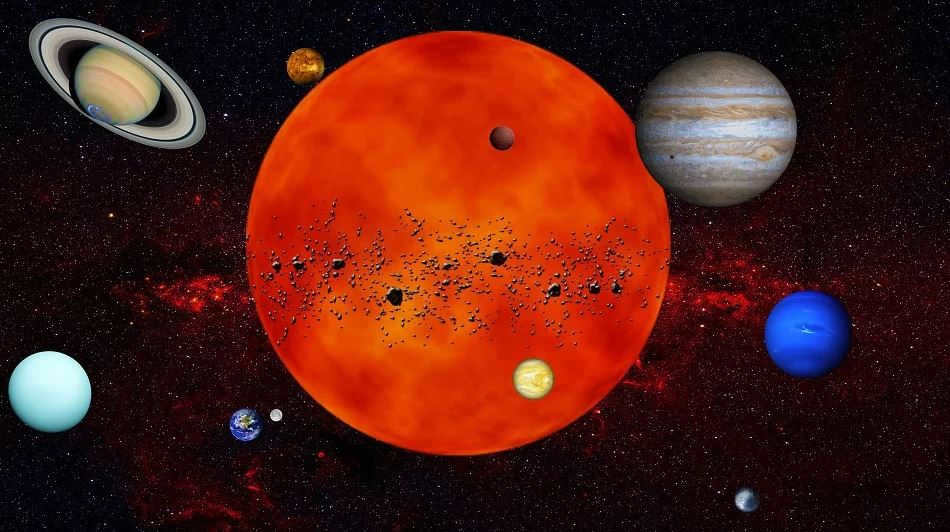
On our planet, Earth, we typically define a year as consisting of 365 days. However, there is an exception known as a leap year, which occurs every four years and consists of 366 days.
Nevertheless, the true definition of a year is the duration it takes for our planet to complete one full revolution around the Sun.
Now, let’s consider what would happen if we were to view time from the perspective of another planet. How would the length of a year change? To find out, let’s explore the duration of a year on various planets within our solar system.
A year on Mercury
Mercury completes one orbit around the Sun in 88 days (specifically 87,969 days), resulting in a Mercurian year that is equivalent to 88 Earth days or approximately 0.241 Earth years. However, there is an interesting twist. Due to Mercury’s sluggish rotation, which takes 58.646 days to complete, and its rapid orbital velocity of 47.362 km/s, a single day on Mercury lasts for about 175.96 Earth days.
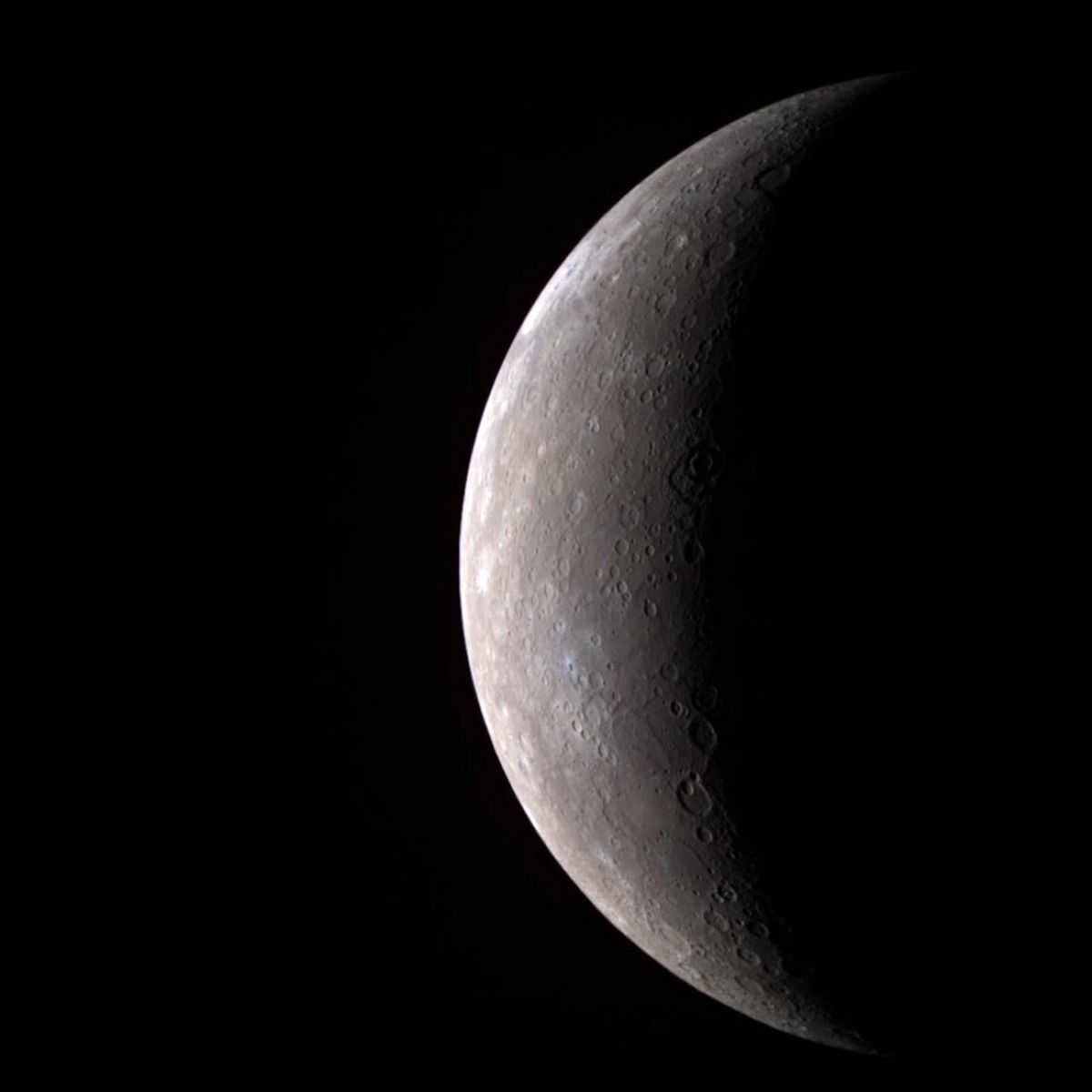
Therefore, in actuality, the duration of one year on Mercury is only half as long as a single day on the planet. The reason for this is that Mercury holds the distinction of being the closest celestial body to the Sun, with its distance ranging from 46,001,200 km at perihelion to 69,816,900 km at aphelion. As a result of this proximity, Mercury completes its orbit around the Sun at a faster pace than any other planet in our solar system, ultimately resulting in the shortest year.
Throughout the course of this year, Mercury undergoes drastic and extreme fluctuations in its surface temperature. This temperature range spans from 80°K (-193.15°C) to 700°K (+426.85°C). The primary cause for these fluctuations is the planet’s constant fluctuation in its distance from the Sun and its rotation, which subjects one side of the planet to lengthy periods of exceedingly high temperatures, while the other side endures extended periods of darkness.
Due to its low axial tilt of 0.034° and its fast orbital period, Mercury does not experience any seasonal temperature variations. In other words, there is no significant difference in temperature between different parts of the year on Mercury.
A Year on Venus
Venus, the second closest planet to the Sun, takes 224.7 days to complete one revolution around the Sun. This means that one year on Venus is approximately 0.6152 Earth years.
However, Venus has a unique rotation period that further complicates things. It actually takes Venus 243 Earth days to complete one rotation on its axis, making it the slowest rotation among all the planets. Additionally, Venus rotates in a retrograde motion, opposite to its orbital path.
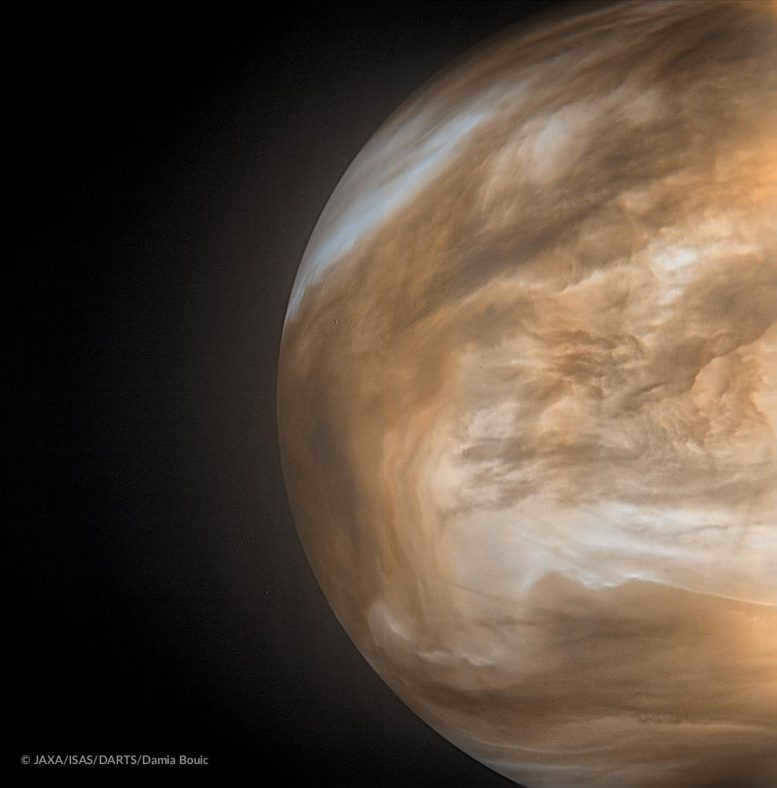
When it comes to the time it takes for one solar day to pass on Venus (the period between sunrises), it is equivalent to 117 Earth days due to its slow rotation around the Sun. As a result, a year on Venus lasts for 1.92 Venusian days.
Furthermore, Venus has a significantly smaller axial tilt of 3° compared to Earth’s 23.5°, which is why its seasonal cycle is shorter, lasting only 55-58 days compared to Earth’s 90-93 days.
However, these factors do not have any impact on the surface temperature of the planet. In fact, the temperature on Venus remains consistently at a scorching +463°C, which is hot enough to melt lead.
A Martian year
Mars possesses one of the most extreme eccentricities among all the planets in our solar system. Its orbit varies significantly, with its closest point to the Sun, known as perihelion, located at a distance of 206,700,000 km, while its farthest point, known as aphelion, is approximately 249,200,000 km away (eccentricity serves as an indicator of how circular or elongated an orbit is). This substantial difference in distance leads to a considerably longer year on Mars. In fact, it takes Mars the equivalent of 687 (Earth-like) days to complete one revolution around the Sun, which is equivalent to 1.8809 Earth years or 1 year, 320 days, and 18.2 hours.
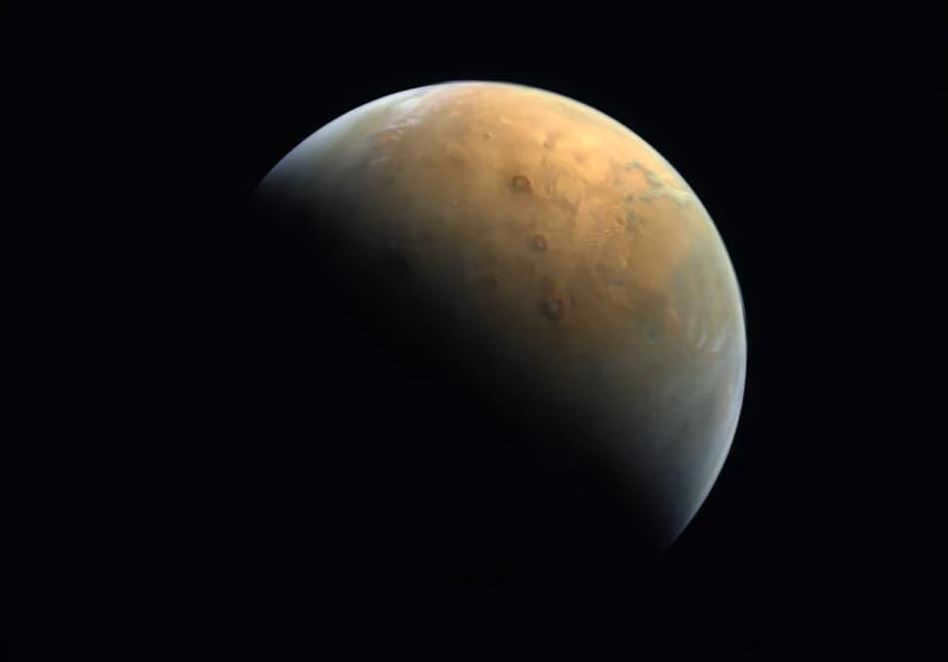
However, Mars has a rotation period that is very similar to Earth’s, which is 24 hours, 39 minutes, and 35.244 seconds. This means that the length of a day on Mars is only slightly longer than a day on Earth. However, the seasons on Mars are typically twice as long as Earth’s seasons. This is because Mars has a greater axial tilt (25.19°) and eccentricity, which causes stronger seasonal variations.
During the winter on Mars, the global atmospheric pressure is 25% lower than in the summer. This is primarily due to temperature fluctuations and the exchange of carbon dioxide between the Martian polar dry ice caps and the atmosphere, which is primarily composed of CO2.
As a result of these factors, the length of Martian seasons can vary greatly and are longer than Earth’s seasons. Additionally, Martian seasons change approximately every six months and do not start on the same day each Martian year.
A Jupiter Year
Jupiter presents a unique scenario. The massive planet completes one full rotation on its axis in just 9 hours, 55 minutes, and 30 seconds. In addition, it takes a staggering 11.8618 Earth years for Jupiter to complete a full orbit around the Sun.

Therefore, on Jupiter, a year lasts not only 4,332.59 Earth days but also 10,475.8 Jupiterian days. This means that there are a lot of sunrises!
Similar to Venus, Jupiter has a slight axial tilt of only 3 degrees. As a result, there is no significant seasonal variation between the hemispheres. Additionally, temperature changes are caused by the chemical composition and depth of the atmosphere, rather than seasonal cycles.
Although Jupiter does have “seasons” that change very slowly due to its distance from the Sun – with each season lasting 3 years – these seasons are not comparable to those experienced by the planets in the Earth group.
365 days on Saturn
Similar to the massive planet Jupiter, Saturn requires a considerable amount of time to complete a full orbit around the Sun, all the while spinning rapidly on its own axis.
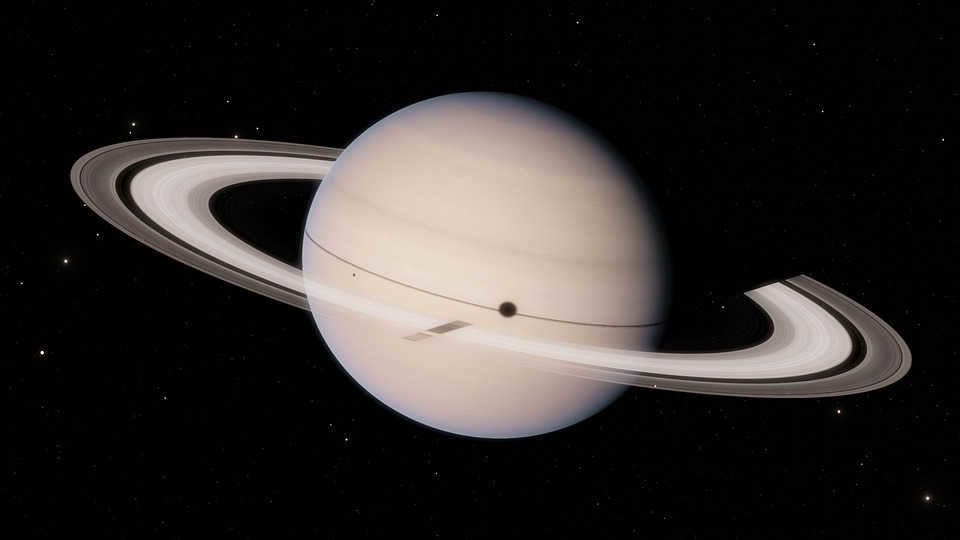
On the whole, the duration of a year on the planet is 10,759 Earth days (approximately equivalent to 29.5 years). However, due to its quick rotation around its axis, it only takes Saturn 10 hours and 33 minutes to complete one rotation, resulting in a year on Saturn lasting 24,491.07 Saturnian days.
Due to its axial tilt of nearly 27 degrees (which is slightly greater than Mars), Saturn undergoes relatively long seasonal changes. However, being a gas giant, these changes do not lead to temperature fluctuations.
In combination with its distance from the Sun (averaging at 1,429.39 million kilometers or 9.5 a.u.), each season on Saturn lasts for more than seven years.
A year on Uranus
Uranus showcases some of the most peculiar annual and seasonal transformations in our solar system.
For instance, it requires approximately 84 Earth years (or 30,688.5 Earth days) for the ice giant to complete a full orbit around the Sun. However, due to the fact that it takes the planet 17 hours, 14 minutes, and 24 seconds to complete one rotation on its axis, a year on Uranus spans 42,718 days.
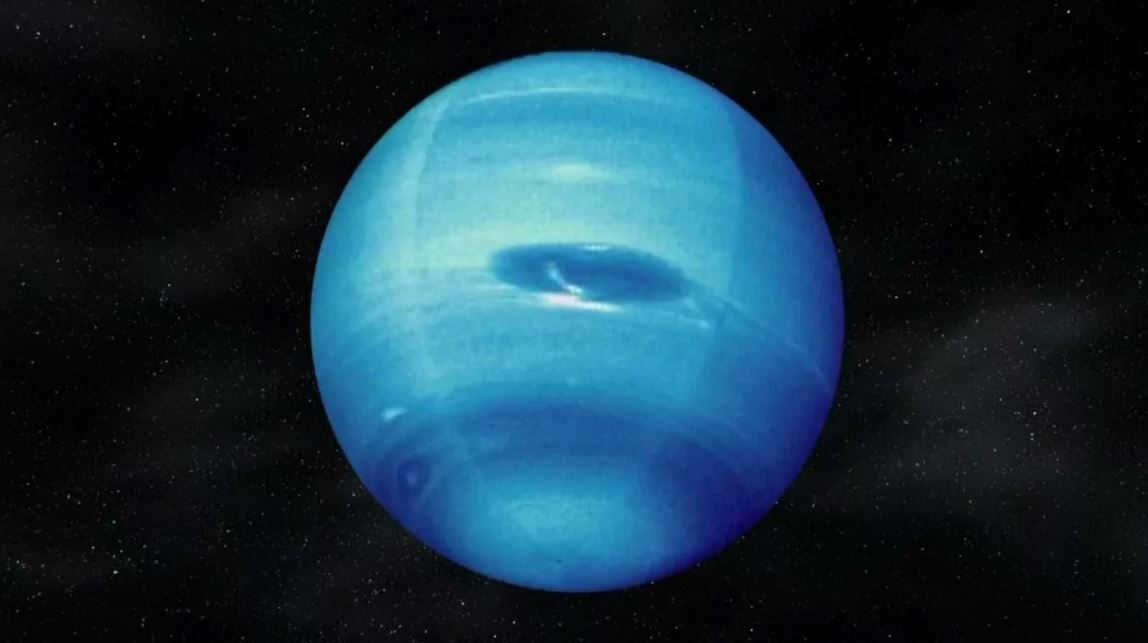
Simultaneously, Uranus has an exceptionally large axial tilt of 97.77° in relation to the Sun. This gives rise to incredibly extreme and distinctive seasonal variations specific to Uranus.
To clarify, when one hemisphere of Uranus is facing the Sun (i.e., during the summer season), it will encounter an uninterrupted period of light lasting for 42 years. Conversely, during the winter season, the situation is reversed, and the same hemisphere will undergo an uninterrupted period of darkness lasting for 42 years – an incredibly lengthy polar night, even though daylight is not very luminous.
With its distance being farthest from the Sun, Neptune holds the record for having the longest orbital period among all the planets in the entire solar system.


Consequently, the duration of a year on Neptune is the longest compared to any other planet, lasting approximately 164.8 years (or 60,182 Earth days). However, due to its relatively fast rotation around its axis (16 hours, 6 minutes, and 36 seconds), one Neptunian year comprises of approximately 89,666 Neptunian days.
Furthermore, Neptune experiences seasonal variations, similar to Earth and Mars, with an axial tilt of 28.5 degrees. Each season on Neptune lasts for over 40 years. Nonetheless, unlike Earth, these seasonal changes do not result in noticeable temperature fluctuations due to Neptune being a gas/ice giant.
A journey through time on Pluto
Unveiled to the world in 1930 courtesy of Clyde Tombaugh, Pluto was formerly acknowledged as the solar system’s ninth celestial body, positioned at the farthest reaches.
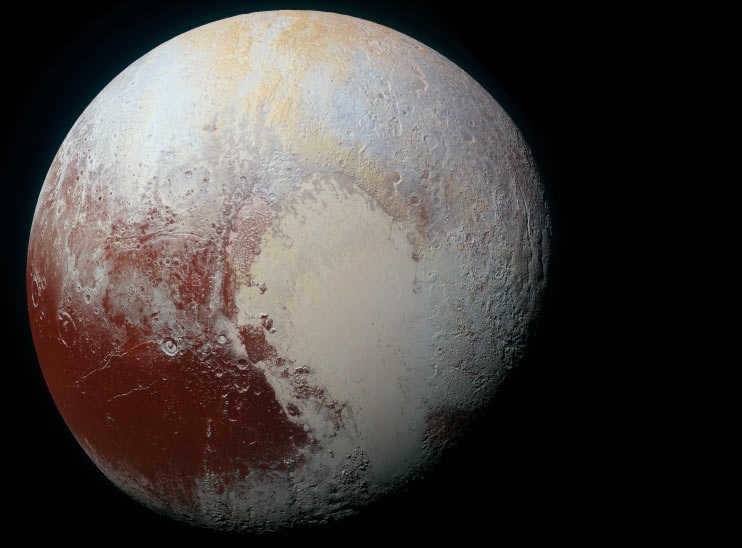
Nevertheless, as a result of a formal definition established in 2006 at the 26th General Assembly of the International Astronomical Union, Pluto lost its status as the ninth planet of the solar system and instead became classified as a "dwarf planet", "transneptunian object", and "Kuiper Belt object".
Despite undergoing this change in nomenclature, Pluto continues to captivate astronomers as one of the most remarkable celestial entities in existence.
In addition to possessing an incredibly distant orbit around the Sun (and consequently an extremely lengthy orbital period), it also boasts the most eccentric orbit of any planet or minor planet within our solar system. As a result, a year on Pluto is incredibly protracted, lasting a staggering 248 Earth years!
The original release date of this article was December 2019.
Is your child curious about the night sky and outer space, the Sun and the Moon? Elena Ilyushchenko, senior methodologist at the Moscow Planetarium, has specially prepared some information about Earth’s celestial companions for inquisitive children and their parents.
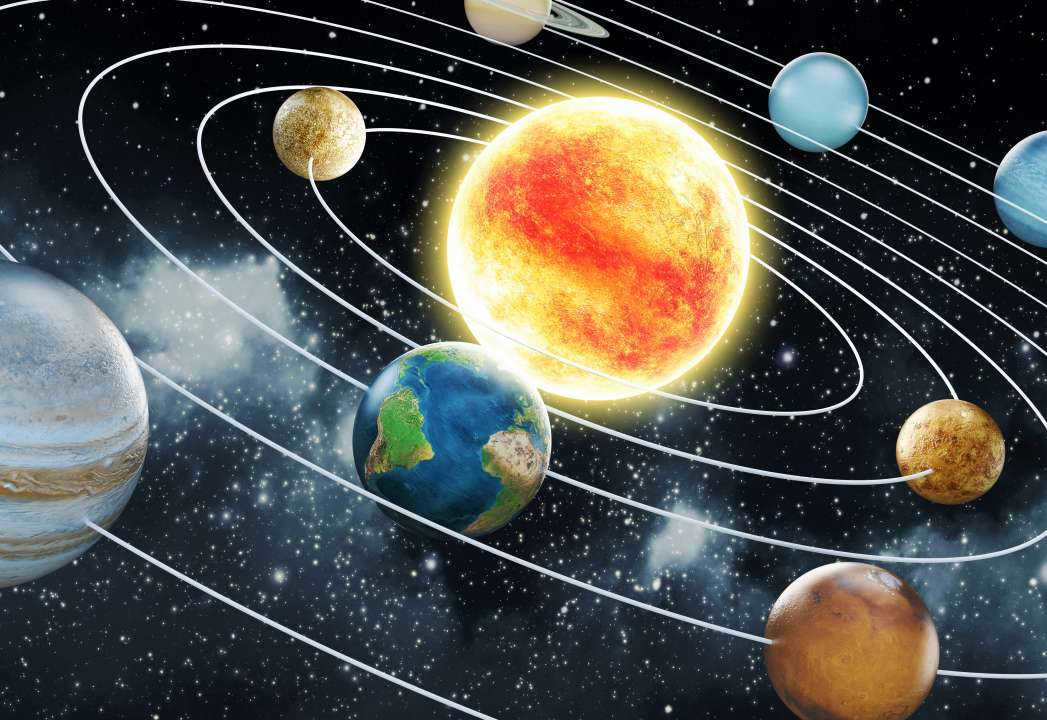
Where is our place of residence? On planet Earth. And where does planet Earth reside? In the Solar System! This serves as our celestial abode. Furthermore, within this abode, Earth has neighboring planets that we will become acquainted with.
Planet Earth revolves around the Sun, the solitary star positioned in the center of the system, within the third orbit. An orbit represents the hypothetical trajectory along which the planets traverse.
Within our system, there are a total of eight planets. However, in addition to the planets, two asteroid belts exist.
- One is referred to as the Main Belt. It lies between Mars and Jupiter.
- The second one is known as the Kuiper belt. It is situated beyond Neptune, on the outskirts of our solar system, and it bears the name of the astronomer Gerard Kuiper.
Occasionally, comets, which are celestial nomads, pay us a visit. Comets are composed of ice and cosmic dust, and as they draw nearer to the Sun, they start to thaw and evaporate, revealing their magnificent tail.
Mercury is the planet closest to the Sun.

This planet is the tiniest, yet it holds the title for being the swiftest. In just 88 days, it completes one full orbit around the Sun, whereas the Earth takes 365 days.
The reason for Mercury’s rapid speed is its proximity to the scorching Sun. During the daytime, temperatures soar to a scorching +430°C, only to plummet to a freezing -180°C at night.
Mercury rotates on its axis at an incredibly slow pace, resulting in a day-night cycle that spans 59 days. Within this time frame, Mercury experiences drastic temperature fluctuations, going from extremely hot to extremely cold.
However, there is another planet that surpasses Mercury in terms of heat, and that planet is Venus.
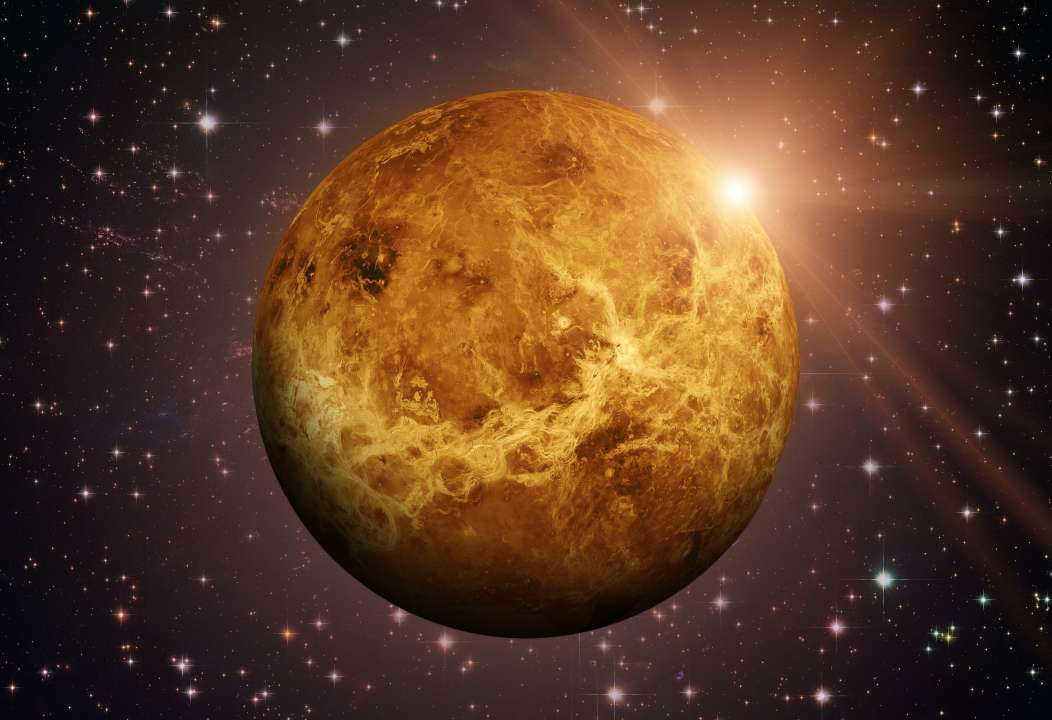
Venus is located further from the Sun, however, it is enveloped by a dense layer of clouds. These clouds are abundant! Just imagine: if you were standing on Venus and gazing up at the sky, you would never catch a glimpse of the Sun or the stars, only an endless expanse of clouds. Furthermore, these clouds give rise to a greenhouse effect. Perhaps you have experienced the sweltering heat inside a greenhouse or hothouse?
The temperature on Venus soars to a scorching 500 degrees Celsius. – that is incredibly hot! Within those clouds, there are intense lightning storms and acid rain. Venus is an unforgiving planet, yet it is often referred to as Earth’s sister. But why is that? Well, these two planets share similarities in terms of size and possessing a solid surface.
The Planet We Call Home

Planet Earth possesses vast bodies of water, including oceans, seas, and rivers. Water is the source of life, and its presence on our planet contributes to a remarkable diversity of flora and fauna. Earth provides ideal conditions for various forms of life, offering warmth, light, air, and water. It is our responsibility to safeguard our planet, as it is the only known habitat in the entire Universe where life can exist.
Furthermore, Earth is accompanied by a solitary natural satellite known as the Moon. This celestial body frequently graces our skies, displaying dark patches known as seas (although they contain no water, consisting instead of frozen lava) and circular depressions caused by meteorite impacts, known as craters.
The planet known as Mars is of a reddish hue
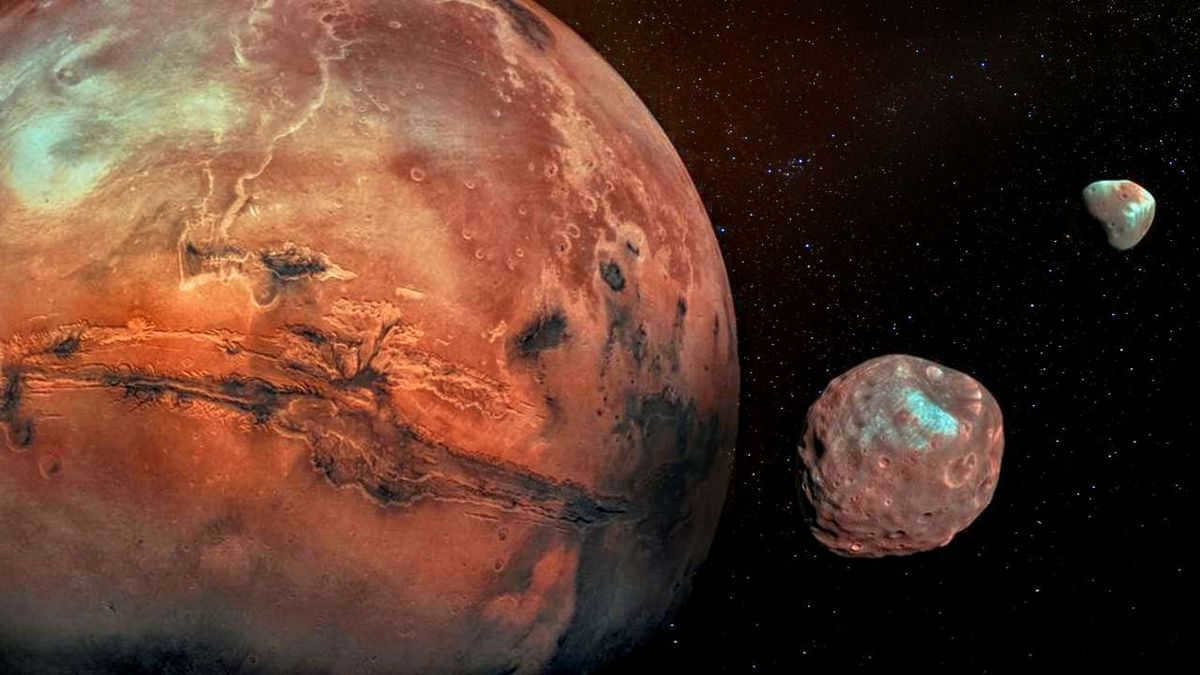
There are individuals who hold the belief that Mars appears red due to its high temperature. However, Mars is actually colder because it is situated further away from the Sun, with an average temperature of approximately -60°C! So, what causes Mars to have a red hue? Well, the reason is that Mars is covered in a layer of rusty dust, giving every pebble and grain of sand on the planet a reddish appearance.
In addition, Mars has two moons called Phobos and Deimos, which are named after Fear and Terror respectively. This is fitting considering that Mars itself is named after the god of war, and war is often accompanied by fear and terror.
Now that we have acquainted ourselves with the planets of the Earth group, it is important to note that these planets have a solid surface that can be walked upon. On the other hand, there are planets that lack a solid surface and are composed mainly of gas, primarily hydrogen and helium. These planets are known as gas giants and include Jupiter, Saturn, Uranus, and Neptune.
Jupiter holds the title of being the biggest planet within our solar system
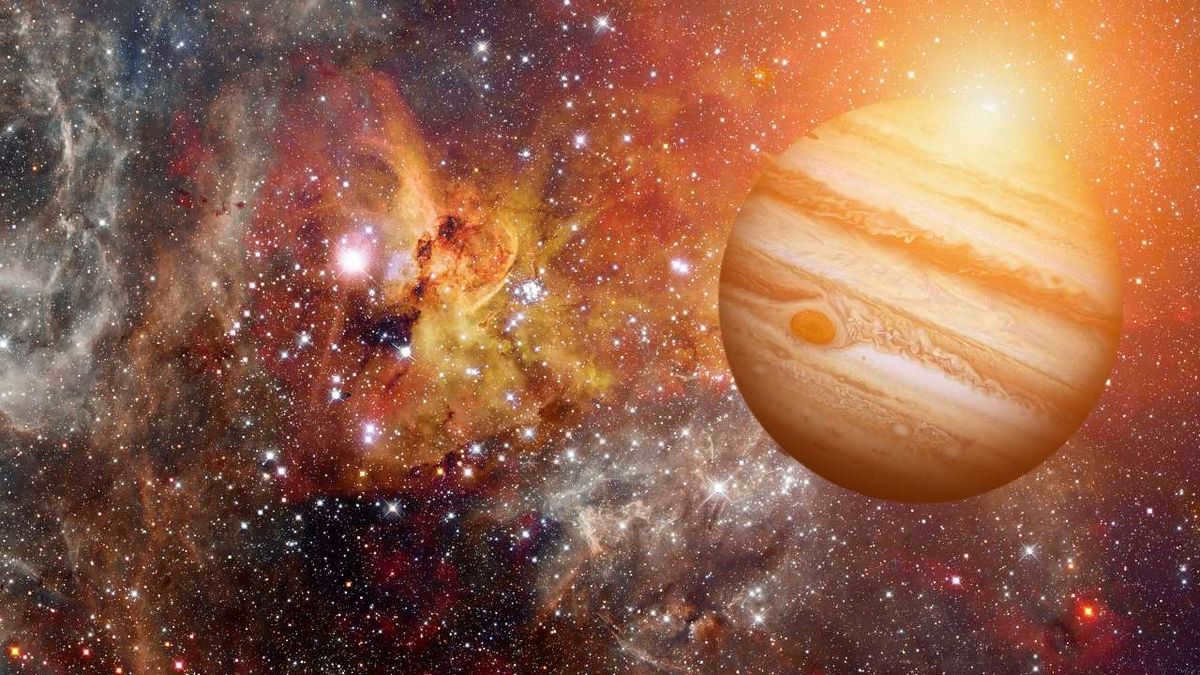
Being the largest planet, Jupiter is also the most powerful! Its gravitational force is incredibly strong and it attracts numerous satellites – it has an impressive total of 79. Can you imagine having 79 moons in our sky? It would create a breathtaking and extraordinary sight.
Jupiter has a fast rotation rate, completing a full day in just 10 hours. Its atmosphere consists of different layers that move rapidly, forming counter currents and giving rise to swirling vortices and hurricanes. Among these, the most famous is undoubtedly the Great Red Spot, a massive and awe-inspiring hurricane that is twice the size of our planet Earth.
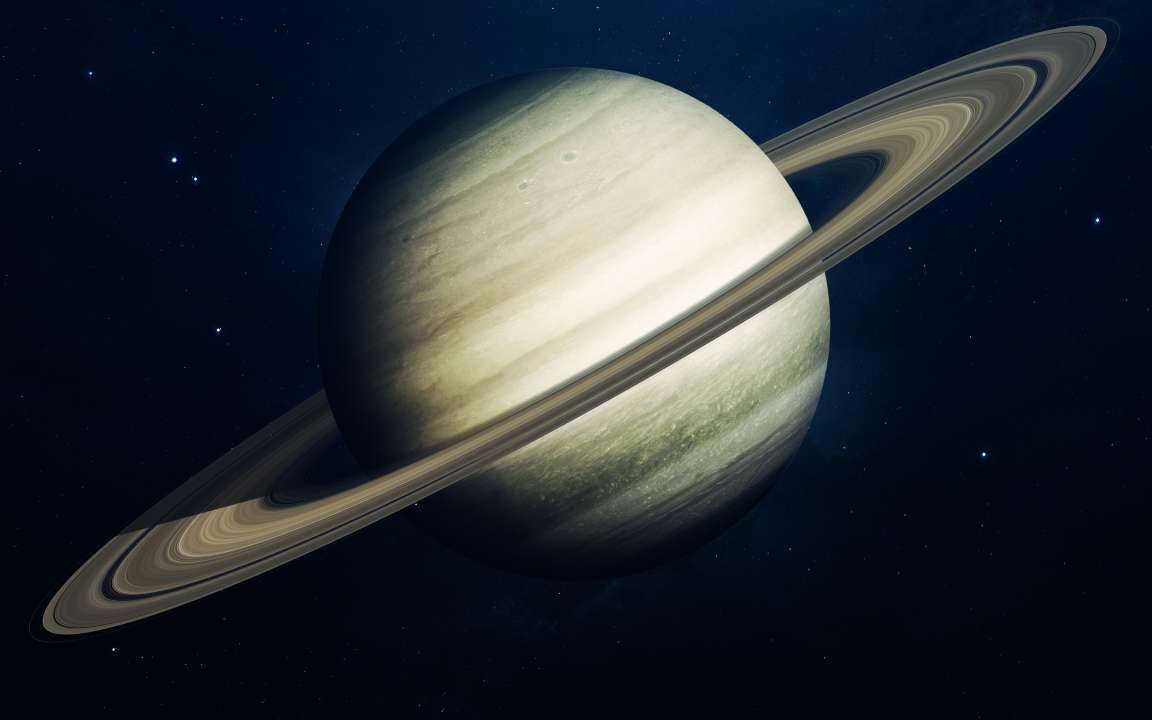
Its stunning rings are well-known. Astronomer Galileo Galilei referred to them as “the planet’s ears.” The rings consist of blocks composed of rock and ice.
Interestingly, it’s not just Saturn that possesses rings; all giant planets have them. Jupiter, Uranus, and Neptune each have rings as well, although they are smaller, thinner, and less visible from Earth.
On the other hand, Saturn boasts wide, conspicuous rings. In addition, Saturn has the largest number of satellites, with 82 in total.
Uranus and Neptune: The Sibling Duo.
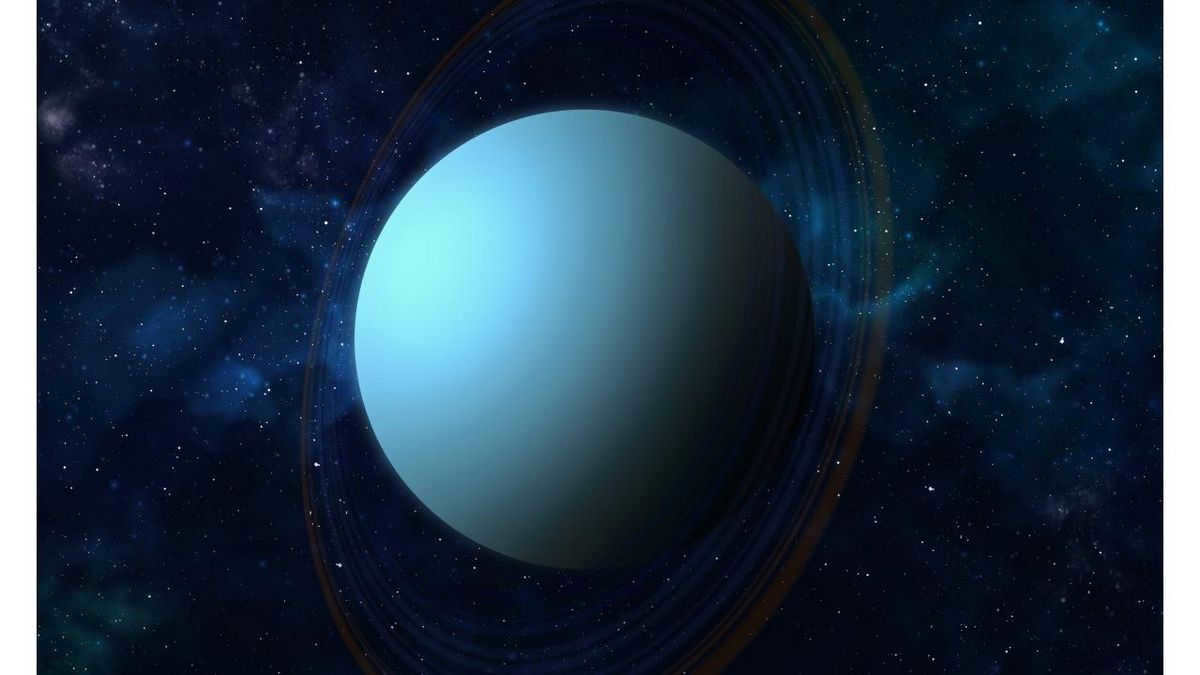
Two twin brothers, Uranus and Neptune, reside in the seventh and eighth orbits. They possess similar coloration and size. The unique characteristic of these planets lies within their atmospheres, which contain a distinctive gas called methane, resulting in a bluish tint.
Uranus stands out as an extraordinary planet due to its abnormal orientation. This planet’s axis is positioned horizontally, causing it to rotate around the Sun like a spinning wheel. It holds the title of the coldest planet in our solar system, with temperatures plummeting as low as -220 degrees Celsius.
Neptune, on the other hand, maintains a slightly higher temperature of -200°C. However, it endures the most severe weather conditions among all the planets. Neptune experiences incredibly strong winds and the most devastating hurricanes.
Also check out:
Image sources: cigdem, Dotted Yeti, NASA images, Volodymyr Goinyk, Elena11, Vadim Sadovski Mirai, MarcelClemens/Shutterstock.com
No Comments/ 4085
Mercury is currently recognized as the smallest planet in our solar system.
The name “Mercury” was given to this planet by the Romans, who believed it to be associated with the god’s messenger. Additionally, the planet has been referred to by different names depending on its appearance in the sky – either as the morning star or the evening star. However, Greek astronomers were aware that these names were used interchangeably for the same celestial body. Heraclitus, a Greek philosopher, proposed that Mercury and Venus orbited the Sun, contradicting the prevailing belief at the time that the Earth was at the center of the universe.
The planet Mercury is situated in close proximity to the Sun, resulting in high temperatures. According to recent data, the surface temperature of Mercury can reach up to 450 degrees Celsius. However, it is believed that Mercury lacks an atmosphere, which typically helps to retain heat. As a result, the temperature on Mercury experiences extreme fluctuations. During the night, temperatures can drop to as low as -170 degrees Celsius. This significant temperature difference on Mercury is the largest among all the planets in the solar system, with fluctuations of approximately 600 degrees Celsius.
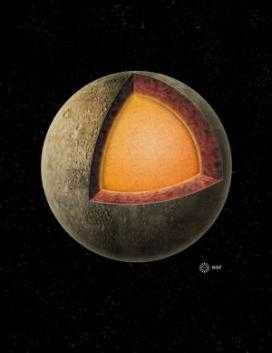

Planet Mercury is the smallest planet in the solar system, with a diameter of only 4879 km. It is even smaller than the satellites Ganymede and Titan. However, what makes it unique is its metallic core, which occupies almost half of the planet’s volume or about 75 percent of its diameter. This gives Mercury a significant amount of mass and strong gravity, much more than one would expect. For instance, if you were on Mercury, your weight would be 38 percent of your weight on Earth.
Mercury, which is as old as the entire solar system at 4.6 billion years, has a metallic core measuring 3,600 to 3,800 kilometers in diameter. The outer shell of Mercury is approximately 500-600 km thick.
Thanks to the Mariner-10 spacecraft, scientists made an unexpected discovery – Mercury possesses a magnetic field, which is unusual for a planet of its size. Typically, planets can only generate magnetic fields if they have a molten core and rotate at higher speeds. Surprisingly, Mercury’s rotational speed is much slower than expected, with a day on Mercury lasting 59 Earth days. Despite its small size, Mercury’s core has not cooled down as predicted and is still in a molten state. This molten core explains the planet’s magnetic properties, as confirmed by ground-based radar observations in 2007.
Instead of possessing a robust atmosphere, Mercury boasts a tenuous exosphere composed of atoms that are propelled off its surface by the combined forces of sunlight, solar wind, and micrometeorites. These particles rapidly escape into space, resulting in the formation of a plume.
Therefore, rather than possessing a traditional atmosphere, Mercury’s exosphere is comprised of various elements, with oxygen accounting for 42% of its composition, followed by sodium at 29%, hydrogen at 22%, helium at 6%, and potassium at 0.5%. Additionally, there may be small amounts of argon, xenon, krypton, neon, carbon dioxide, water, and nitrogen present.
Orbit
Rephrase the text, making it unique, using the English language while preserving the HTML markup:

Mercury has a year that lasts 88 Earth days. This small planet completes a full orbit around the Sun in less than two of its own days! It travels at an incredible speed of approximately 112,000 mph (180,000 km/hour) – faster than any other planet in our solar system. The shape of its orbit is elongated and oval, resembling an ellipse. When Mercury is closest to the Sun, it is only 29 million miles (47 million km) away, but as it moves further away, it reaches a distance of 43 million miles (70 million km). If we could observe the Sun from Mercury’s closest point, it would appear three times larger than what we are used to seeing from Earth.
Discovering Mercury
Mariner 10 was the pioneer in reaching Mercury, becoming the first spacecraft to successfully fly past the planet in 1974. During its multiple flybys, Mariner 10 captured images of approximately half of Mercury’s surface, providing invaluable insight into the planet’s composition and features. Building on the knowledge gained from Mariner 10, NASA launched the MESSENGER mission in 2004. Unlike its predecessor, MESSENGER entered orbit around Mercury, allowing for a more comprehensive and detailed study of the planet. Through MESSENGER’s observations and data collection, scientists continue to unravel the mysteries of Mercury.
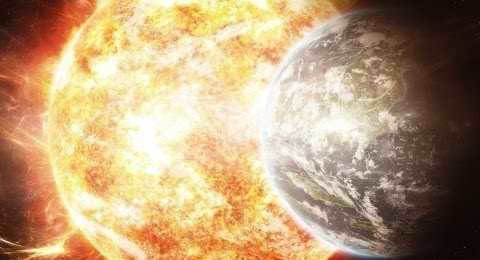
If you desire to witness it without the aid of a telescope, it can be quite challenging as the planet is often enveloped in the dazzling rays of the Sun for the majority of the time.
Throughout its period of visibility, one can catch a glimpse of it in the western sky shortly after sunset, or in the eastern sky before sunrise. When observed through a telescope, the planet exhibits phases akin to the Moon, contingent upon its position within its orbital path.
Key features of Mercury in brief
Mass: 3.3*10(23) kg. (0.055 times the mass of Earth);
Equatorial diameter: 4870 km. (0.38 times the equatorial diameter of Earth);
Surface temperature: maximum of 450°C, minimum of -170°C.
Rotation period on its axis: 58.65 Earth days.
Distance from the Sun (average): 0.387 astronomical units, which is equivalent to 58 million kilometers
Orbital period (year): 88 Earth days
Orbital inclination to the ecliptic: 7°
Orbit eccentricity: 0.206
Average orbital velocity: 47.9 kilometers per second
Free-fall acceleration: 3.72 m/s2
Planetologists have determined the oldest planet in the Solar System.
Which planet is the oldest in the solar system? Undoubtedly, it is the Sun: the birth of our planetary system began 4.6 billion years ago with its formation. Following the Sun, Jupiter formed from the accretion disk – a collection of rocks and dust that surrounded the newborn Sun. This is the finding of a team of international scientists conducting research at Livermore National Laboratory.
Planetologists have long been aware that the initial formations in our solar system were the enormous gas giants such as Jupiter, Saturn, Uranus, and Neptune. Following them came the smaller terrestrial planets Mercury, Venus, and Earth. However, the order in which the gas giants formed has remained a mystery. As of now, humanity does not possess any samples of matter from objects beyond the asteroid belt, making it difficult to determine which planet in our solar system is the oldest. To address this question, scientists have instead turned their attention to meteorites, of which we have an ample supply.
What is the origin of our solar system?
Throughout history, humans have been fascinated by the mystery of how the universe came into existence. However, it was only during the scientific revolution in the 16th to 18th centuries that researchers started to seriously investigate this question using empirical evidence. During this period, astronomers and physicists began to develop theories supported by observable data to explain the origins of our sun, planets, and the entire universe.
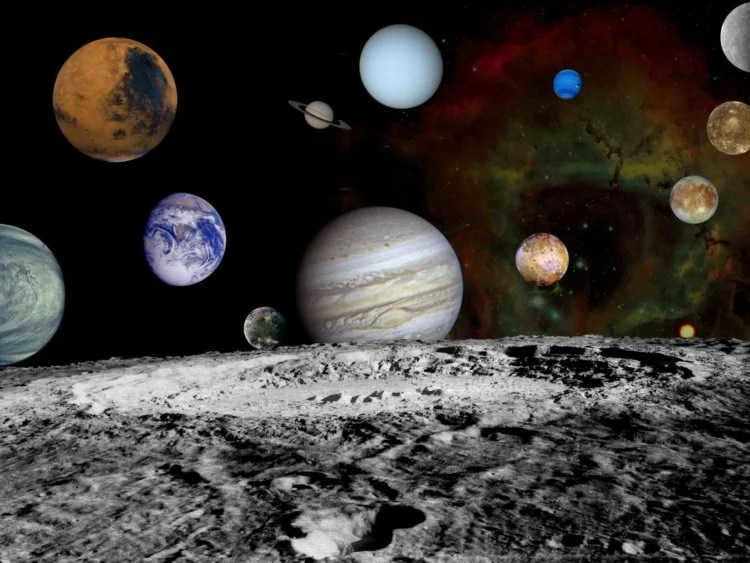
There are numerous conjectures that could potentially address this inquiry.
With regards to the solar system, the most well-known and broadly accepted viewpoint is the nebular hypothesis of planetary formation. As per this model, the Sun, planets, and all other objects in the solar system were formed billions of years ago from dense clouds of molecular hydrogen. Initially proposed as an explanation for the origin of the solar system, it continues to be the most widely acknowledged theory.
What is the nebular hypothesis?
The nebular hypothesis is a theory that explains the formation of the solar system. It suggests that at the beginning, there were clouds of gas and dust in space. As these clouds started to condense, denser clumps began to form. Once these clumps reached a certain density, they began to rotate due to the law of conservation of momentum. The increasing pressure caused by the rotation also heated up the clumps. The majority of the matter accumulated in the central clump, which eventually became the Sun. The remaining matter formed a ring around the central clump, known as a protoplanetary disk.
How the origin of the planets occurred
Consequently, colossal planets like Jupiter, Saturn, Uranus, and Neptune had already materialized somewhere in the vicinity of Mars and Jupiter – surpassing the frigid temperature threshold where substances sufficiently freeze to keep volatile compounds solidified as ice. Surprisingly, the diversity of this ice proved to be considerably broader than the assortment of metals and silicates that constituted the planets of the inner solar system. This unprecedented diversity enabled them to amass such immense proportions that they eventually developed complete atmospheres composed of hydrogen and helium. The remaining material that remained unutilized in the planet formation process became concentrated in other regions, ultimately giving rise to the asteroid belt, the Kuiper belt, and the Oort cloud.
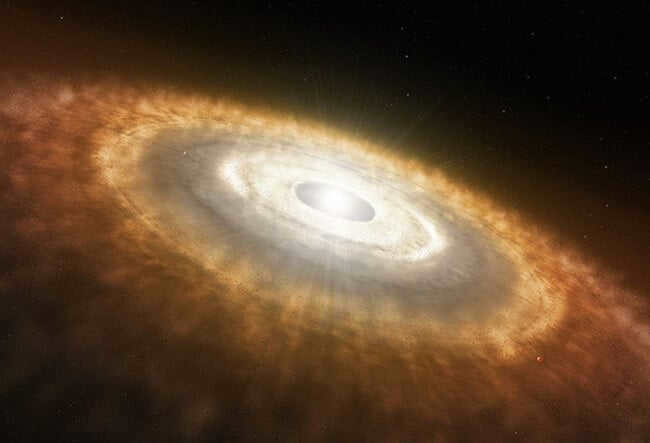
In the depiction by an artist, the early solar system experienced collisions between particles in the accretion disk, leading to the creation of planetesimals and eventually planets.
Within the following 50 million years, the pressure and density of hydrogen at the core of the protostar reached a level sufficient to trigger a thermonuclear reaction. As the temperature, reaction rate, pressure, and density continued to rise, hydrostatic equilibrium was achieved. At this point, the Sun became a main-sequence star. The heliosphere was formed by solar winds, which cleared away the remaining gas and dust in the protoplanetary disk, completing the process of planetary formation.
Origin of the nebular hypothesis
In 1734, the concept that the solar system emerged from a nebula was initially proposed by Emanuel Swedenborg, a scientist and theologian from Sweden. Immanuel Kant, who was familiar with Swedenborg’s ideas, further developed this theory and published his findings in 1755 in his work “General Natural History and Theory of the Sky.” Kant’s work postulated that gas clouds, known as nebulae, undergo slow rotation, gradual collapse, and, due to the force of gravity, become compressed to eventually form stars and planets.
Pierre-Simon Laplace proposed a less detailed model of formation in his 1796 work “An Outline of the System of the World”. According to Laplace’s theory, the Sun initially possessed an atmosphere that spanned the entire solar system. As this “protostellar cloud” cooled and contracted, it began to rotate at a higher velocity, leading to the ejection of excess matter. Subsequently, planets formed from this matter.
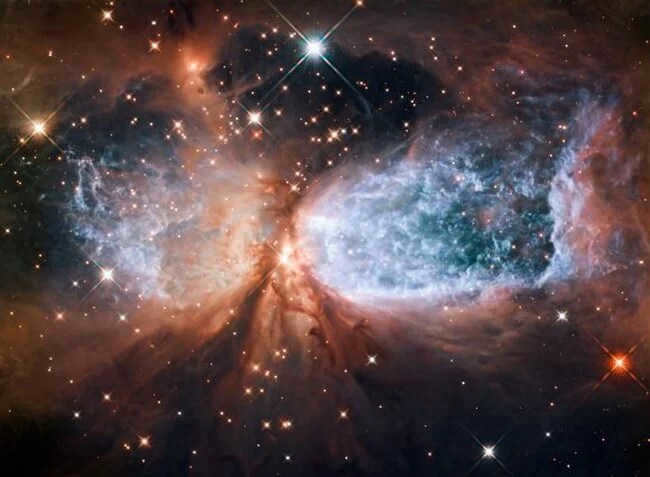
The Sh 2-106 nebula. A small area where stars are being born in the constellation of Swan.
During the 19th century, Laplace’s theory of the nebula was widely accepted, despite some apparent contradictions. One major issue was how the momentum was distributed between the Sun and the planets, which the nebular theory failed to explain. Scottish scientist James Clerk Maxwell (1831-1879) also argued that the difference in rotational speed between the outer and inner parts of the protoplanetary disk would have prevented matter from accumulating. Additionally, astronomer Sir David Brewster (1781-1868) did not accept the theory, once stating:
“People who hold the belief in the validity of the nebular theory and are firmly convinced that our planet Earth obtained its solid structure and atmosphere from a ring expelled from the outer layer of the sun, which was later enclosed within a solid terraqual sphere, are more inclined to entertain the notion that the Moon was also created in a similar fashion. [When observed from this perspective], it becomes logical to assume that the Moon, too, should possess its own water and atmosphere.”
By the close of the 20th century, scientists had begun to question the credibility of Laplace’s model, prompting them to seek out new theories. However, it wasn’t until the late 1960s that the most modern and widely accepted version of the nebular hypothesis emerged – the solar nebular disk model. This groundbreaking model was developed by the Soviet astronomer Victor Safronov in his book “Evolution of the preplanetary cloud and the formation of the Earth and planets” (1969). Safronov’s book comprehensively explores the fundamental questions and enigmas surrounding planetary formation, providing clear and concise answers to these mysteries.
If you’re interested in staying up-to-date with science and technology news, be sure to subscribe to us on Yandex.Zen to ensure you don’t miss out on new materials!
While initially applied only to the solar system, the preplanetary cloud model is now widely believed to have universal applicability in explaining the formation of exoplanets across the entire universe. As such, it continues to be frequently employed in our attempts to understand the origins of these distant worlds.
Drawbacks of the nebular hypothesis
Despite its widespread acceptance, the nebular model still presents several unresolved questions that confound even contemporary astronomers. One such issue concerns planetary tilt. According to the nebular theory, all planets orbiting stars should exhibit similar axial inclinations relative to the ecliptic plane. However, the observed inclinations of planets in both the inner and outer regions of star systems differ significantly.
While the planets in the inner circle have axis inclination angles ranging from 0 degrees, the Earth and Mars, for instance, have axis inclinations of about 23.4 and 25 degrees, respectively. Similarly, the planets in the outer circle also have varying axis inclinations. For instance, Jupiter has a tilt of 3.13 degrees, while Saturn and Neptune have tilts of 26.73 and 28.32 degrees, respectively. Interestingly, Uranus has an extremely tilted axis of 97.77 degrees, which results in one of its poles constantly facing the Sun.
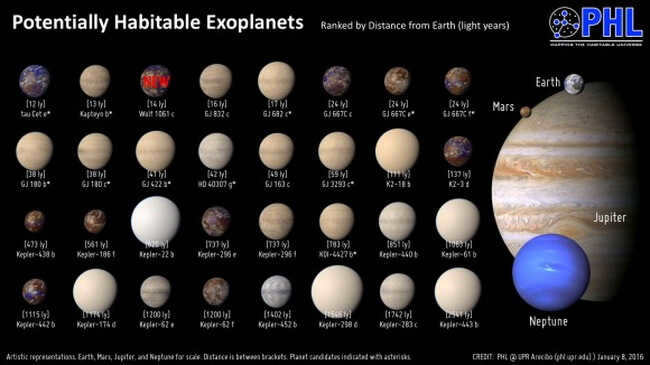
The Planetary Habitability Laboratory has compiled a list of potentially habitable exoplanets.
Furthermore, the study of planets beyond our solar system has revealed inconsistencies that challenge the nebular hypothesis. One of these inconsistencies pertains to the existence of “hot Jupiters,” which are gas giants with orbits in close proximity to their stars, lasting only a few days. Astronomers have made adjustments to the hypothesis to address these issues, but not all problems have been resolved.
It is highly probable that the unanswered queries are those that are most pertinent to comprehending the essence of development, hence why they pose such a challenge to resolve. Just as we believe we have discovered the most persuasive and rational explanation, there always arise aspects that elude our understanding. Nonetheless, we have made significant progress in reaching our present conceptions of star formation and planetary formation. As our knowledge of neighboring star systems grows and our exploration of the cosmos expands, our models continue to evolve and mature.
Mercury’s surface, similar to the moon’s, is covered with craters. The atmosphere is extremely thin. Mercury has a substantial iron core, which serves as the origin of a magnetic field that amounts to 0.1 of that of Earth’s. The temperature on Mercury’s surface ranges from 90 to 700 K (-180 to 430 °C). This planet is named after Mercury, the god of the Roman pantheon, who is comparable to the Greek Hermes and Babylonian Nabu. Mercury does not have any natural satellites.
Jupiter is a celestial body composed of gas and liquid, lacking a solid surface. Its atmosphere is comprised of 89% hydrogen and 11% helium, and it resembles the Sun in terms of its chemical composition. The planet Jupiter is surrounded by rings that consist of a collection of relatively small particles made of stone, varying in size from a few microns to several meters. Jupiter is named after the king of the Roman gods.
By the end of the 1970s, there were already 13 satellites orbiting Jupiter. The American Voyager 1 spacecraft discovered three more satellites in 1979. Since 1999, advanced ground-based telescopes have helped discover an additional 47 satellites of the planet, the majority of which have a diameter ranging from 2 to 4 kilometers.
Uranus, on the other hand, has a relatively small solid core made of iron-stone. Surrounding this core is a dense atmosphere that spans at least 8000 kilometers. This atmosphere is composed of approximately 83% hydrogen, 15% helium, and 2% methane.
In 1930, American astronomer Claude Tombaugh came across a slow-moving star-shaped object on photographic negatives. This object was later named Pluto, in honor of the ancient Roman god of the underworld.
In May 1930, the International Astronomical Union officially designated Pluto as a planet. Initially, it was believed that Pluto’s mass was similar to that of Earth, but subsequent research revealed that Pluto’s mass is almost 500 times less than Earth’s, even less than the Moon’s. Specifically, Pluto’s mass is 1.2 x 10^22 kg (0.22 times Earth’s mass). The average distance between Pluto and the Sun is 39.44 astronomical units (5.9 x 10^12 km), and its radius is approximately 1.65 thousand kilometers. Pluto takes 248.6 years to complete one orbit around the Sun and rotates around its axis every 6.4 days. Scientists believe that Pluto is composed of a combination of rock and ice, and it has a thin atmosphere consisting of nitrogen, methane, and carbon monoxide. Additionally, Pluto has three moons: Charon, Hydra, and Nycta.
Therefore, starting from 2006, the Solar System has consisted of a total of eight planets: Mercury, Venus, Earth, Mars, Jupiter, Saturn, Uranus, and Neptune. Alongside these, the International Astronomical Union has officially recognized five dwarf planets, namely Ceres, Pluto, Haumea, Makemake, and Erida.
It was on June 11, 2008, that the IAU made an announcement regarding the introduction of a new celestial body category known as “plutoid”. The term “plutoid” refers to objects that orbit the Sun with a radius greater than that of Neptune, possess enough mass for gravitational forces to shape them into an almost spherical form, and do not clear space around their orbit (meaning there are numerous small objects that orbit around them).
The information in this article is sourced from publicly available materials.
Which came first: the Sun or the planets in our solar system?
A hypothesis on the origins of planets and the evolution of stars: the formation of the Sun and the subsequent development of the solar system.
Our solar system is not unique in the universe. Many stars, when observed from Earth, have their own “families” of planets. However, not all stars possess this characteristic. One possible explanation is the age of the star that serves as the “parent” of the planetary system. For instance, it is known that 10% of stars near the Sun emit excessive infrared radiation, which is likely caused by the presence of dust disks around these stars. These dust disks may be the initial stage of planetary system formation.
Nevertheless, while the overall process of “solar system” formation is fairly well understood, there remain numerous unanswered questions concerning the specific details of this formation.
For instance, when it comes to the formation mechanism of planets within the solar system, there is still no widely accepted consensus.

The initial planet in the solar system is a topic of great curiosity. The classical model of planetary formation suggests that large pieces of matter form from a cloud of dust attracted to a young star. These pieces of matter are then organized by gravitational forces, resulting in a well-balanced and functioning system. This process took place approximately 5 billion years ago when the solar system was formed. The Sun, our central star, is considered a second or later generation star. The materials for the solar system came from the remnants of previous stars, which accumulated in gas and dust clouds.
Generally speaking, our knowledge of the origin and development of stars surpasses our understanding of the formation of our own planetary system. This is not unexpected, considering the abundance of stars compared to the limited number of known planetary systems. Our understanding of the solar system is still far from comprehensive, and it has evolved significantly over the past three decades.
Moreover, there is no assurance that future discoveries will not completely upend our current understanding of its formation process.
There are numerous theories surrounding the creation of the solar system. To illustrate, we can discuss the theory proposed by Swedish astronomers X. Alwen and G. Arrhenius. Their hypothesis is based on the belief that there exists a universal mechanism for planet formation, which applies to both planets forming near a star and companion planets forming near other planets. To account for this, they propose the involvement of various forces such as gravity, magnetohydrodynamics, electromagnetism, and plasma processes.
At the time when planets started forming, the star that serves as the central body of the system already existed. In order for a planetary system to take shape, the central body must possess a magnetic field that surpasses a particular critical value, and the space surrounding it must be filled with sparse plasma. Without these conditions, the process of planet formation cannot occur.
The Sun possesses a magnetic field, and the corona of the young Sun served as the source of plasma. Although it has since diminished in size, even now the planets of the Earth group (Mercury, Venus, Earth, Mars) are essentially immersed in the Sun’s tenuous atmosphere, and the solar wind carries its particles to more distant planets. It is therefore possible that the corona of the young Sun extended to the present-day orbit of Pluto.
Alwen and Arrhenius broke away from the conventional notion that the Sun and planets were created from a singular mass of matter, all at once. They propose that initially, a primary body arises from the gas-dust cloud, and then, material from the exterior arrives to facilitate the formation of secondary bodies. The immense gravitational pull of the central body attracts a stream of gas and dust particles that pervade the space, which will eventually become the site for the creation of secondary bodies.
There is evidence to support this claim. The findings of extensive research on the isotopic composition of meteorites, the Sun, and the Earth have been compiled. Discrepancies in the isotopic composition of certain elements found in meteorites and rocks on Earth have been observed compared to the same elements on the Sun. This indicates that these elements have different origins.
Therefore, it can be concluded that the majority of the matter in the solar system originated from one gas-dust cloud, and the Sun formed from this cloud. A smaller portion of the matter, with a different isotopic composition, came from another gas-dust cloud and contributed to the formation of meteorites and, to some extent, planets. The merging of these two gas-dust clouds occurred approximately 4.5 billion years ago, resulting in the creation of the Solar System.
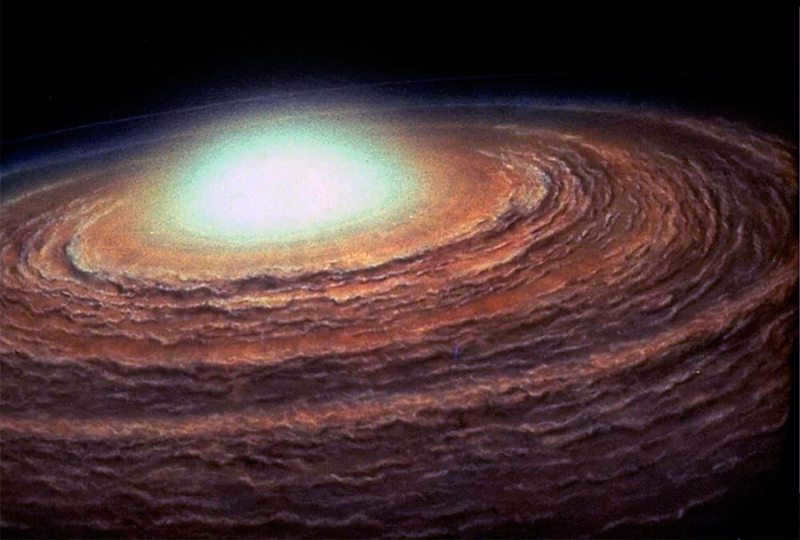
Maybe this is what the initial phase of the solar system’s evolution resembled: the sun gathering building materials.
The Sun forms planets
The young Sun, which likely possessed a significant magnetic field, was larger than its present size but did not extend to Mercury’s orbit. It was surrounded by a massive supercorona that consisted of a rarefied, magnetized plasma.
Similar to the present day, the Sun experienced eruptions from its surface, but during that time, these emissions stretched for hundreds of millions of kilometers and reached the orbit of the current Pluto. The currents within them were estimated to be hundreds of millions of amperes or more. This caused the plasma to be drawn into narrow channels. These channels experienced ruptures and disruptions, leading to the dispersion of powerful shock waves and the compression of the plasma along their path.
The supercorona plasma rapidly transformed into an uneven and irregular state. Particles of matter from the outer reservoir descended towards the central body due to the force of gravity. Once in the corona, these particles became ionized and, depending on their chemical composition, experienced varying degrees of deceleration at different distances from the central body. This initial differentiation of the preplanetary cloud based on chemical and weight composition occurred.
Experiments conducted in laboratories have confirmed the existence of a critical velocity at which a neutral particle, moving through a rarified plasma, becomes ionized. Estimated calculations indicate that this mechanism could facilitate the accumulation of matter necessary for planet formation within a relatively short timeframe of approximately one hundred million years.
As the matter accumulates in the supercorona, it starts to fall behind in its rotation compared to the central body. The plasma wants to match the angular velocities of the body and the corona, so it spins faster while the central body slows down. This increased rotation speed of the plasma creates stronger centrifugal forces, pushing it away from the star. This creates a region with very low density of matter between the central body and the plasma. This environment is ideal for the condensation of non-volatile substances, as they precipitate from the plasma in the form of separate grains.
Once the grains reach a certain mass, they receive a push from the plasma and continue to move along a Keplerian orbit. As they move, they also carry a portion of the momentum from the solar system. Interestingly, even though the planets only make up 0.1% of the system’s total mass, they account for 99% of the overall momentum of motion.
These grains, which have captured some momentum, follow elliptical orbits that intersect with each other. Through multiple collisions, these grains start to gather into larger groups and their orbits gradually become more circular, aligning with the plane of the ecliptic. Eventually, they form a toroid-shaped jet stream. This jet stream captures any particles that come into contact with it and evens out their velocities to match its own.

The Solar System was formed through the gradual segregation and composition of “embryos” of future planets, as well as the removal of space debris and dust. Despite the presence of giant clouds of dust and debris, the formation of planets has already begun, with these “embryos” located at different distances from the young star.
According to this theory, the asteroid belt is a result of the interruption of the planet formation process at the planetesimals stage, caused by a lack of deposited matter. The rings found around large planets are remnants of jet streams that were situated too close to the primary body and fell within the Roche limit. The Roche limit is a point where the gravitational forces exerted by the primary body are so strong that they prevent the formation of a stable secondary body.
The model suggests that meteorites and comets were created in the outer reaches of the Solar System, beyond Pluto’s orbit. In these distant areas, there was a low-density plasma where the process of matter deposition still occurred, but the formation of jet streams, which give rise to planets, was not possible. As a result, the particles deposited in these regions would stick together, leading to the formation of cometary bodies.
Currently, spacecraft launched from Earth have provided unique information about the planetary systems of Jupiter, Saturn, and Uranus. This data allows us to confidently conclude that there are common characteristics shared by these systems and the Solar System as a whole.
Undoubtedly, this is merely a conjecture and necessitates further advancement. The speculation that the establishment of planetary systems is a systematic process for the Universe lacks compelling proof. However, indirect data permits us to declare that, at the very least, within a specific region of our galaxy, there is a notable presence of planetary systems.
For instance, it is established that all celestial bodies classified as hot stars, whose surface temperature surpasses 7000 K, also exhibit rapid rotational velocities. As the transition to progressively cooler stars happens at a certain temperature threshold, there is an abrupt and substantial decrease in the rate of rotation.





